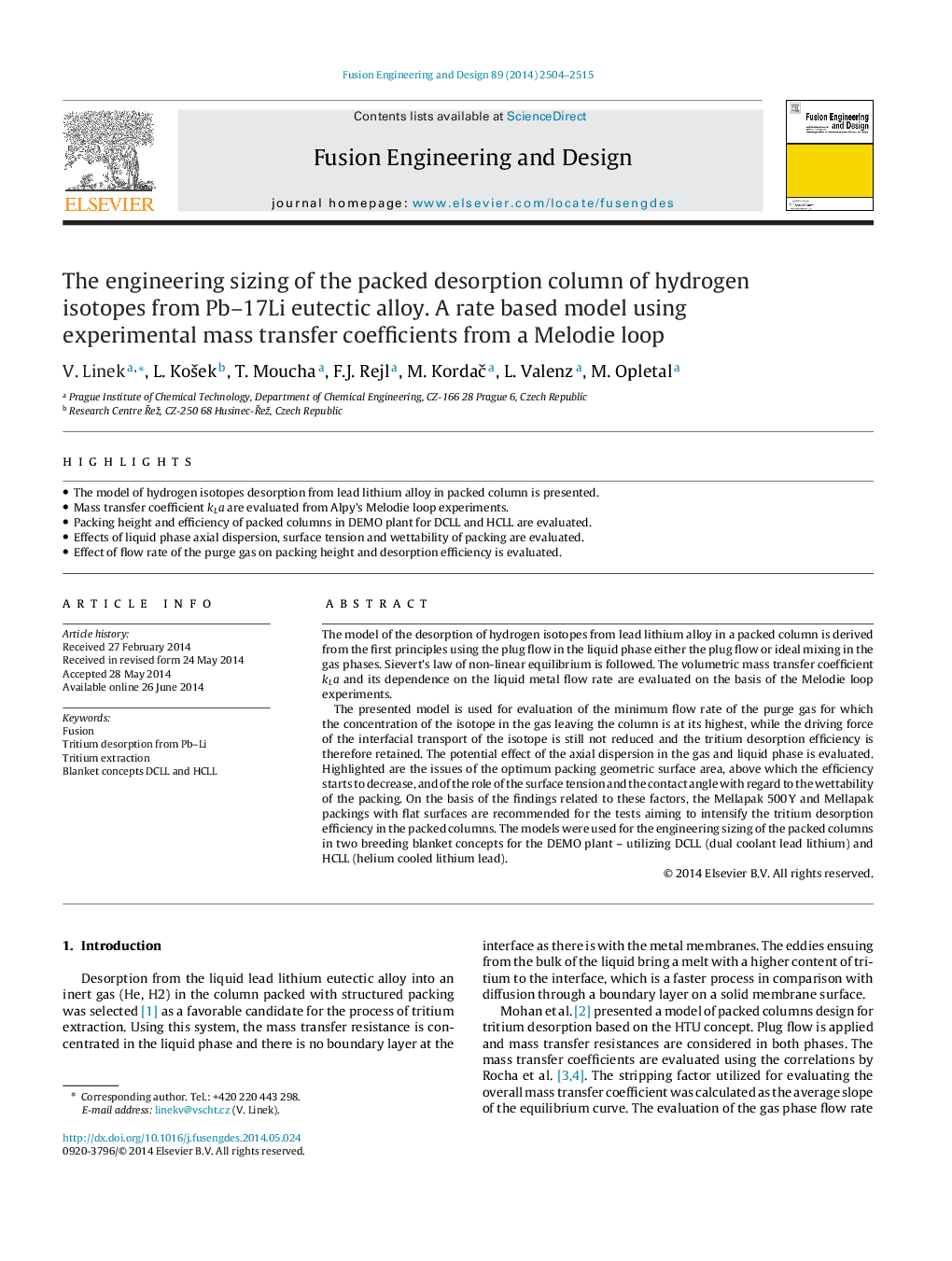| Article ID | Journal | Published Year | Pages | File Type |
|---|---|---|---|---|
| 271247 | Fusion Engineering and Design | 2014 | 12 Pages |
•The model of hydrogen isotopes desorption from lead lithium alloy in packed column is presented.•Mass transfer coefficient kLa are evaluated from Alpy's Melodie loop experiments.•Packing height and efficiency of packed columns in DEMO plant for DCLL and HCLL are evaluated.•Effects of liquid phase axial dispersion, surface tension and wettability of packing are evaluated.•Effect of flow rate of the purge gas on packing height and desorption efficiency is evaluated.
The model of the desorption of hydrogen isotopes from lead lithium alloy in a packed column is derived from the first principles using the plug flow in the liquid phase either the plug flow or ideal mixing in the gas phases. Sievert's law of non-linear equilibrium is followed. The volumetric mass transfer coefficient kLa and its dependence on the liquid metal flow rate are evaluated on the basis of the Melodie loop experiments.The presented model is used for evaluation of the minimum flow rate of the purge gas for which the concentration of the isotope in the gas leaving the column is at its highest, while the driving force of the interfacial transport of the isotope is still not reduced and the tritium desorption efficiency is therefore retained. The potential effect of the axial dispersion in the gas and liquid phase is evaluated. Highlighted are the issues of the optimum packing geometric surface area, above which the efficiency starts to decrease, and of the role of the surface tension and the contact angle with regard to the wettability of the packing. On the basis of the findings related to these factors, the Mellapak 500 Y and Mellapak packings with flat surfaces are recommended for the tests aiming to intensify the tritium desorption efficiency in the packed columns. The models were used for the engineering sizing of the packed columns in two breeding blanket concepts for the DEMO plant – utilizing DCLL (dual coolant lead lithium) and HCLL (helium cooled lithium lead).
